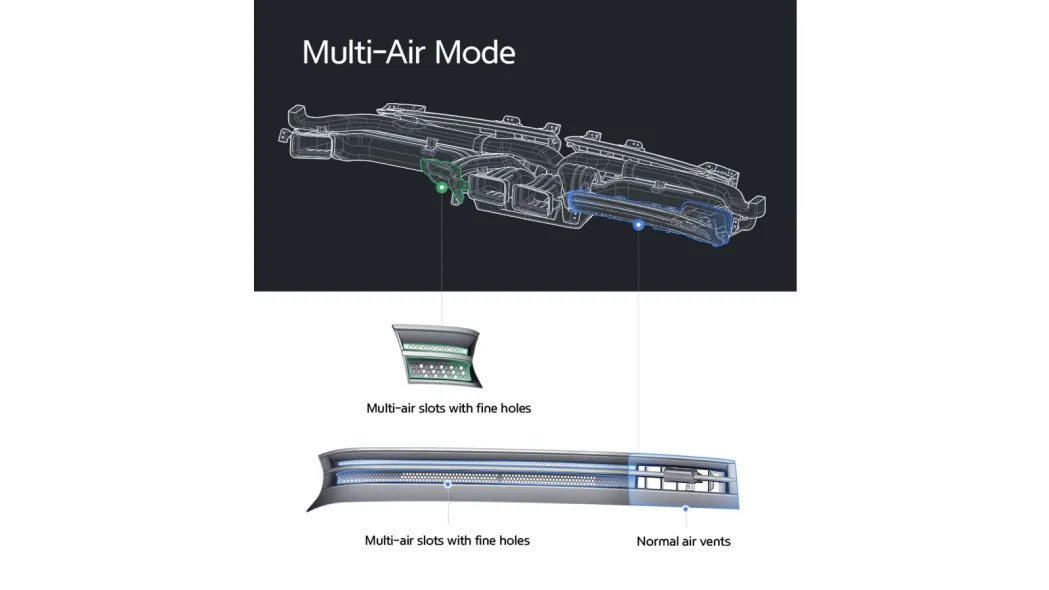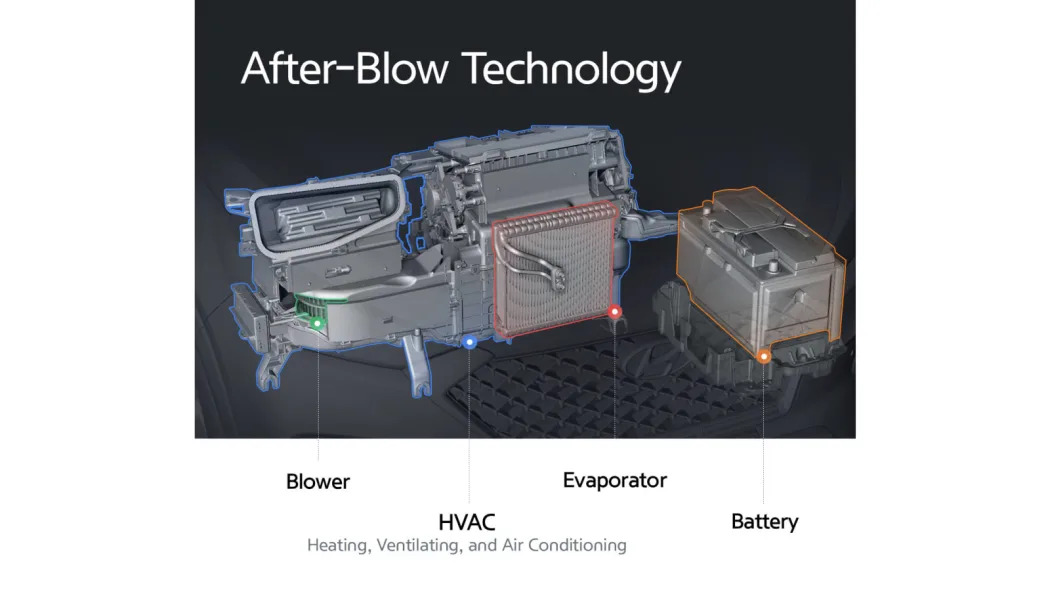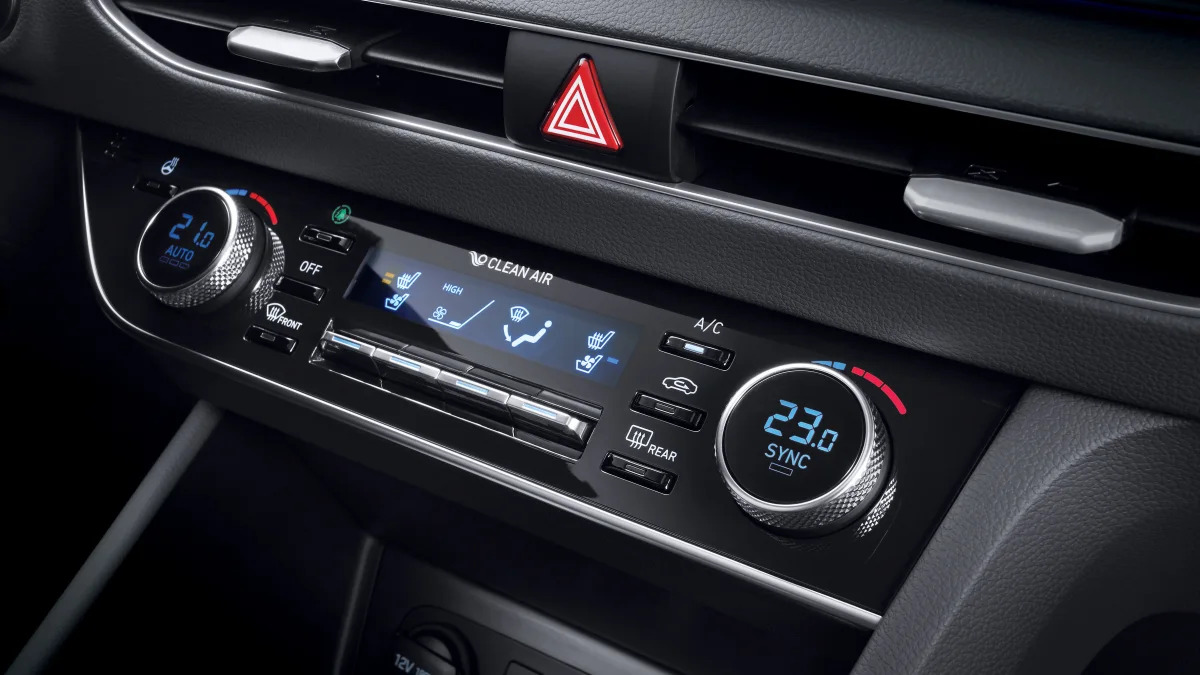The air conditioning systems in Hyundai, Kia and Genesis vehicles are about to get a little better. Hyundai Motor Group just announced three new features it’s developed to improve the experience: after-blow, multi-air mode and a fine dust indicator.
We’ll begin with the fine dust indicator technology. Hyundai is able to measure the concentration and pollution level of ultrafine particles in the vehicle in real time. It then displays the data to those in the vehicle via the climate control panel in numbers and colors. Different colors (blue, green, orange and red) represent varying levels of pollution in the vehicle. If it reaches the orange range, an air-cleaning mode will automatically run to purify the air inside the car. This mode sets the fan between level 3 and 8, swaps to air recirculation mode and activates the air conditioning.
Next up is the multi-air mode tech. This sounds especially awesome for those inside the car. Hyundai is greatly increasing the number of vents that air conditioning can flow through in the vehicle. The diagram below shows exactly what’s going on here.

In addition to just the traditional air vents, Hyundai is adding more porous surfaces with tiny perforations that air can flow through. This allows for a greater dispersion of air into the cabin, reducing direct contact and softening the feel of the air on those inside. Hyundai has added even more multi-air slots on the driver and passenger seats in addition to the dash vents seen here, too. The total volume of air being blown out remains the same, but it’s no longer concentrated in very specific areas. Other than those times that you want hurricane-force winds of cold air blowing on your face in the summer, this setup looks far superior to just a few vents scattered about the dash.
The last piece of tech we’ll explain is the after-blow. Hyundai says the end goal here is to reduce mold growth in the air conditioning system, which if left untreated, could cause unpleasant odors in hot weather.

Here’s how Hyundai is fighting the mold: “After the engine is turned off and the condensate on the evaporator drains naturally for about 30 minutes, ‘After-Blow’ activates for 10 minutes to dry the evaporator and any condensate leftover in the air passage. The air-conditioning system automatically allows influx of outside air during this time to prevent humidity from building up.”
This tech uses a battery sensor to make sure it doesn’t work all day and drain your battery. It’ll also deactivate when the air conditioning system hasn’t been used in a while or it’s especially cold outside. One lesson to take home from this one: If your future Hyundai product randomly starts making noise 30 minutes after you shut it off, that’s perfectly normal. It’s working as designed.
Hyundai hasn’t detailed what vehicles will be getting these technologies (or when), but they'll be going on Korean market cars first, to be followed by vehicles worldwide at some undetermined date.
Related video:










Sign in to post
Please sign in to leave a comment.
Continue